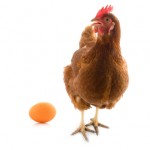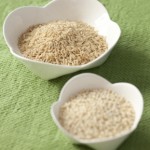My wife is a Mental Health therapist, attended a conference recently & then got an email from the presenter which referred to a study linking diabetes and depression. I got the synopsis from the Web and then went to our local hospital library where I could get a copy of the article. I'll come back to it later, since it was a new twist on the familiar entity .
Firstly, in spite of my post's title, this is no joking matter. I found a World Health Organization (WHO) fact sheet dated January 2011 on diabetes: It's a worldwide epidemic with more than 220 million suffering from the disorder and its consequences including an estimated 3.4 million deaths a year. If you're diabetic your chance of dying at a given age is twice that of your peers. If you are diabetic for fifteen years, you have a 2% chance of being blind and a 10% possibility of having severe visual impairment. Ten to twenty percent of diabetics die of kidney failure and then, of course, there's heart disease and stroke and amputations from diabetic vascular disease.
Next I found a medical article with stark statistics: in 2007 about 2.6% of the US population aged 20-39 had diabetes, 10.8% of those aged 40 to 59 and 23.1% of those over 60. Diabetes and its complications consume 14% of the US health dollar and we're fairly high up there in the list of countries having a significant prevalence of the disease. Lowest on the WHO list was Iceland at 2% and highest was Saudi Arabia with 13+% of those who are 20 to 79 years old being diabetic.
There is a strong correlation between diabetes type 2 & excess weight, especially among women. That association is 80% or higher in Europe, Latin America and North America according to still another article.
And, as you might expect, eating a healthy diet, getting regular physical activity, maintaining a normal body weight and not smoking are the basic of diabetes prevention. By the way, 90% of diabetics around the world have type 2 disease, resulting from the body's ineffective use of insulin.
So what's the new angle? I already knew that half of all diabetics die from cardiovascular diseases, incluing heart attacks and stroke. I didn't know the odds were considerably worse for women with both diabetes and depression. The article I had printed off followed over 55,000 women for ten years (1996-2006) as part of the Nurses' Health Study. There were strong correlations between diabetes and depression in this study performed by researchers from Harvard, the University of Singapore and two English medical schools. Another professor, this one from Indiana, stated that over the past twenty years they'd learned that people with diabetes are twice as likely to suffer from depression as those who don't have the disease.
The Harvard group, in another article, state that death risk is three times as great if a person has both diabetes and depression. The two diseases appear to be linked; the question of antidepressant drugs being associated with an increased risk of diabetes was raised, but causation is unclear at present.
So once more, eat well, stay slim, exercise and be happy; it's good for your health.









